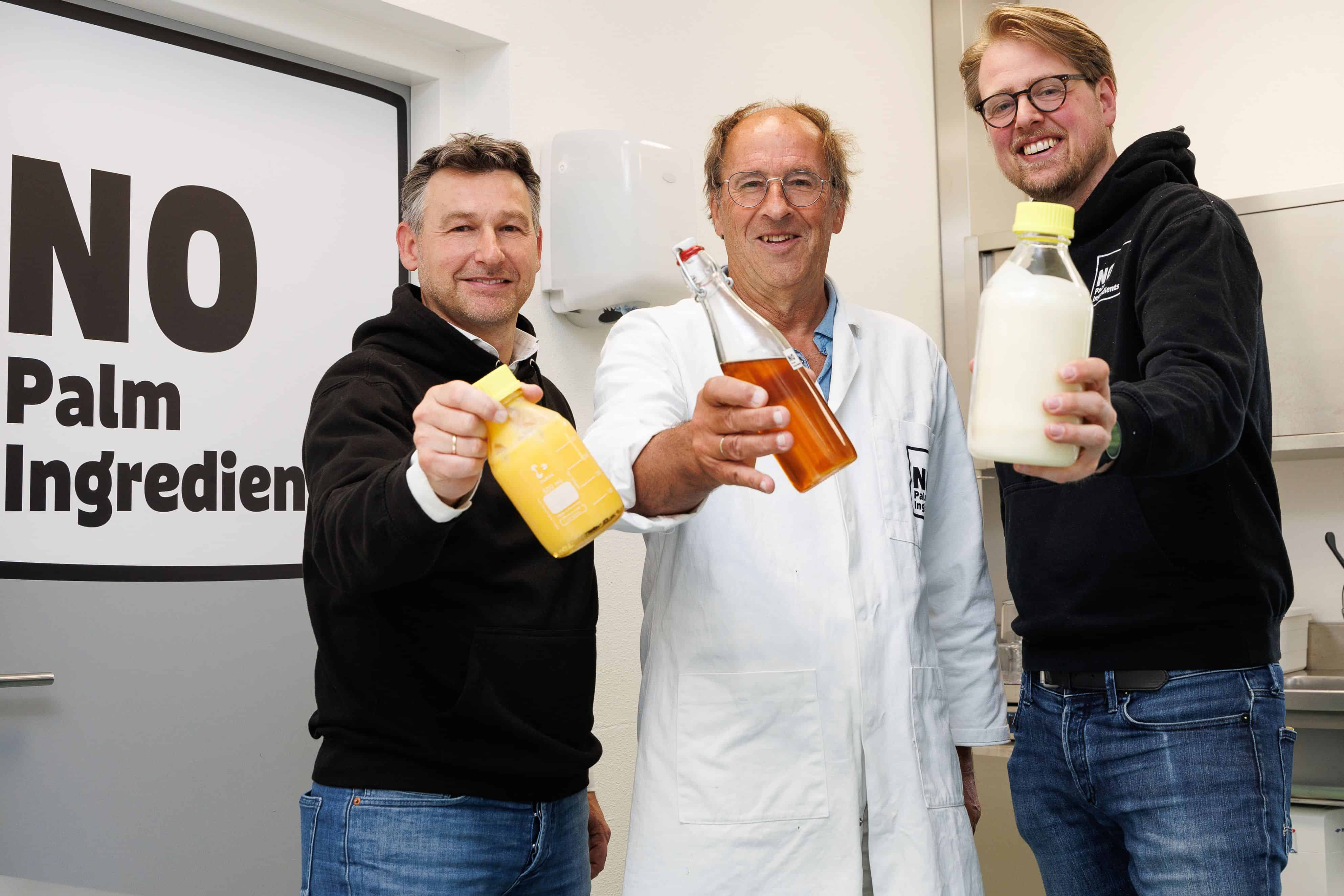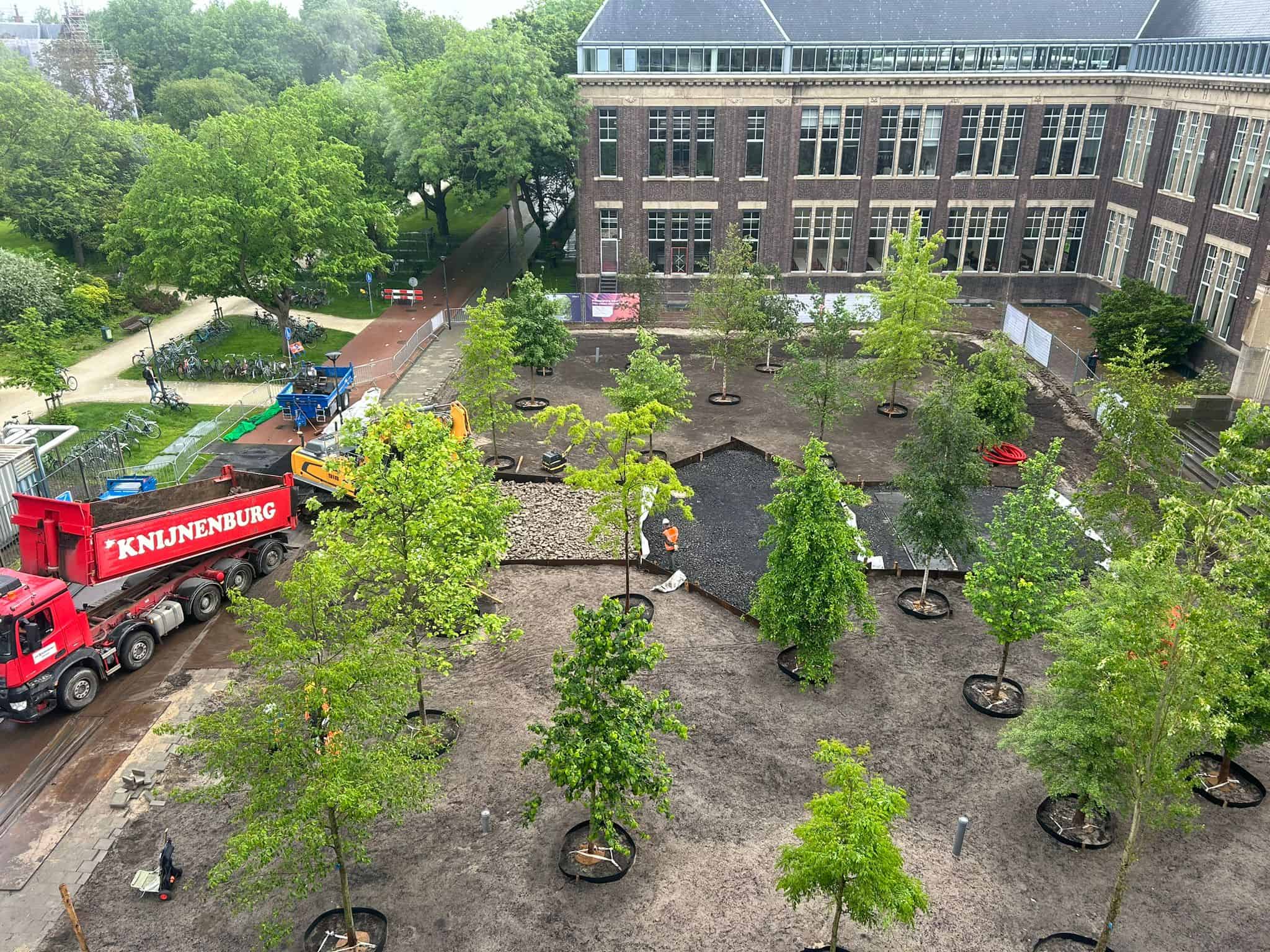
The bio-asphalt test road in Groningen has come through the first half of the year successfully. On the test track, traditional asphalt with bitumen, which is extracted from crude oil, has been replaced by bio-asphalt with the plant-based substance lignin. “It is really nice to show the outside world that our lignin is suitable for the road,” says Annelie Jongerius, senior scientist at Avantium and in charge of the valorization of Lignin.
The climate summit in Glasgow has confirmed it once again. The use of fossil fuels must be drastically reduced over the coming decades. There is also a lot to be gained from the construction of roads in the Netherlands. In traditional road construction, bitumen is commonly used. This is a component made from crude oil used to bind asphalt together. This is slowly changing. One of the first bio-asphalt roads in the Netherlands is now in Groningen. The asphalt contains lignin produced by the chemical technology company Avantium. This substance replaces some of the bitumen and is made from an adhesive substance derived from coniferous trees.
Asphalt does the job
The test road was installed on a provincial road in Groningen at the beginning of June and was developed by the infrastructure company Roelofs and by Avantium. The trial section on the provincial road N987 in Groningen between Siddeburen and Wagenborgen seems to have withstood the first few months quite well. “After constructing a few smaller test sections on bicycle paths in Groningen, it was time for a busy road. The provincial road is heavily used and the asphalt is performing extremely well,” says Albertus Steenbergen, Manager of Asphalt and Engineering at Roelofs. This trial follows a series of tests with bio-asphalt on roads in Zeeland. The lignin used in this test comes from a pulp mill owned by the Finnish company Stora Enso. But the test road in Groningen is the first road with lignin produced on our own soil.
Also read: Dutch Zeeland premieres with first stretch of road paved with bio-asphalt
CHAPLIN
Construction of the test road was done in cooperation with the province of Groningen. The project is part of the CHAPLIN programme. In this, governments, knowledge institutions and companies in the Netherlands are working together to replace traditional asphalt with lignin and thereby contribute to the greening of road construction. Recently CHAPLIN won the WOW Jury Award for Best Cooperation 2021 (ed. WOW is a platform that focuses on the cooperation between road and water managers in government, port and drinking water companies).

Less of a pollutant
Lignin is just as effective as bitumen as a binding agent. It is a biological product, but in addition to this, its use yields even more benefits, Jongerius explains. “When conventional asphalt is reused, the recycling process also releases CO2. With bio-asphalt, far less CO2 is emitted. However, this carbon dioxide has previously been absorbed by those trees that the lignin is made from. So, unlike when using asphalt with bitumen made from crude oil, no additional CO2 is released into the atmosphere. Moreover, our asphalt can be processed under lower temperatures, which is ultimately not as polluting.”
In Avantium’s DAWN pilot biorefinery in Delfzijl, woody raw materials are converted into industrial sugars and lignin. Roelofs actually produces the asphalt in Westenbroek, not far from Delfzijl. “So it’s great that we’ve set up a local production process,” Steenbergen adds.
Research and monitoring
The bio-asphalt road in Groningen will be monitored in the coming years. Further research will be carried out, both in the laboratory and on new test sections. This will show whether any additional adjustments need to be made. Jongerius: “For example, we would like to raise the percentage of lignin in the asphalt even further. We could also look at the type of wood we use. We now base the lignin on coniferous trees, wood waste originating from Stadsbosbeheer, the Dutch forestry management service. It could very well be the case that we will use other types of residual wood in the future.”
A lot of research is also still being done on the asphalt within the CHAPLIN project. Steenbergen: “We work together with the Utrecht University and Wageningen University & Research, among others. Utrecht University is looking at the impact of the asphalt on the environment. We are busy collecting results. A report will be published in six months’ time.”
Withstanding four seasons
The results of the tests around the bio-road will be some time in coming. “The test section has only been in place for six months. We first need to see it through its first four seasons,” says Jongerius. ” We’ll be able to say more about it after that.” Jongerius sees the future in a positive light. “If we look at how good the bio-asphalt in Zeeland looks, I also have every confidence in our test section in Groningen.” Steenbergen agrees. “I see how enthusiastic the Rijkswaterstaat (Directorate-General for Public Works and Water Management, ed.) and the various provinces are where tests with bio-asphalt are being carried out. This is why I am certain that bio-asphalt will be used in more and more places in the Netherlands in the future.”
You can also read the other stories about Groningen via this link.








